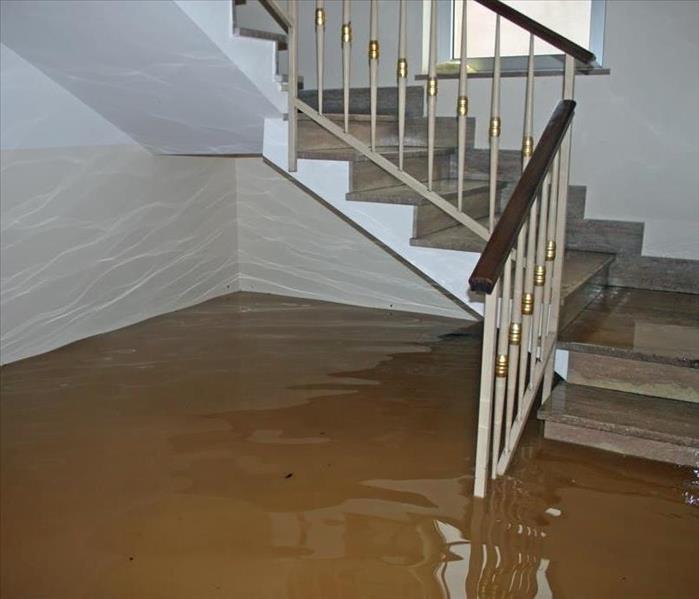What Is Black Water?
2/22/2022 (Permalink)
 Knowing more about Black Water can help you be ready if you experience Water Damage in your Bath, NC, property.
Knowing more about Black Water can help you be ready if you experience Water Damage in your Bath, NC, property.
Many people think a flood is a flood; the water damage itself can be enough. However, a flood can be more or less severe based on the type of water present. The most contaminated water is known as category 3 or black water. It originates from water sources that are likely infested with bacteria and diseases, and/or hazardous chemicals. It could come from many different places such as heavy rains, water from overflowing lakes and rivers, seawater, sewage water and clogged drains.
How To Safely Clean Up Black Water
Cleaning up a flood of highly contaminated water requires much more than merely a mop and bucket. Although the water can cause significant damage and spread fast, you must prioritize your safety and the safety of others. Hiring flood damage restoration experts will always ensure a thorough cleanup because they have the experience and professional equipment to properly accomplish the job. Here are six steps to follow if category 3 water infiltrates your Bath, NC home.
1. Wear Personal Protective Equipment
Wearing PPE is essential for anyone in a flooded area. Everyone who is not working on the cleanup should be kept out of the affected area, particularly children and pets. This PPE can include hair covers, safety glasses, masks or respirators, latex gloves, coveralls and shoe covers. All of these items can protect the wearer from hazards in the water and air and protect the home from cross-contamination to unaffected areas.
2. Extract Excess Water
If you own a wet/dry vacuum, you already have an edge in the water removal process. Otherwise, you will need a mop or towels to remove the water. This type of vacuum will make cleanup much easier, as it quickly removes standing water and floating debris.
3. Remove Contents from Affected Area
Next, it's essential to remove as many contents as possible. Taking this action will give you more space to work. Removing all the contents will also enable you to more easily sort the unsalvageable items from the salvageable ones and clean the ones you're keeping.
4. Discard Ruined Items
The water will cause enough damage to completely ruin some things, particularly porous items like upholstered furniture and carpet. Most likely, you will find contents that have too much water damage to be saved. Others, you will not be able to clean and sanitize properly. You may even have to tear out some drywall and flooring and replace it.
5. Clean and Sanitize All Surfaces
Everything must be thoroughly cleaned and sanitized. Remember to clean all cracks and crevices, as water and bacteria can get into the smallest spaces.
6. Dry Everything Thoroughly
A mold problem can add a whole new level to the water disaster and can spread into other areas of your home. One of the most critical jobs you can do is dry the site and contents as quickly as possible. Mold can begin growing within 24 hours. Hopefully, you will never experience a flood in your home, but if you do, it's good to be prepared with the knowledge of how to mitigate the water damage by removing the black water.






 24/7 Emergency Service
24/7 Emergency Service